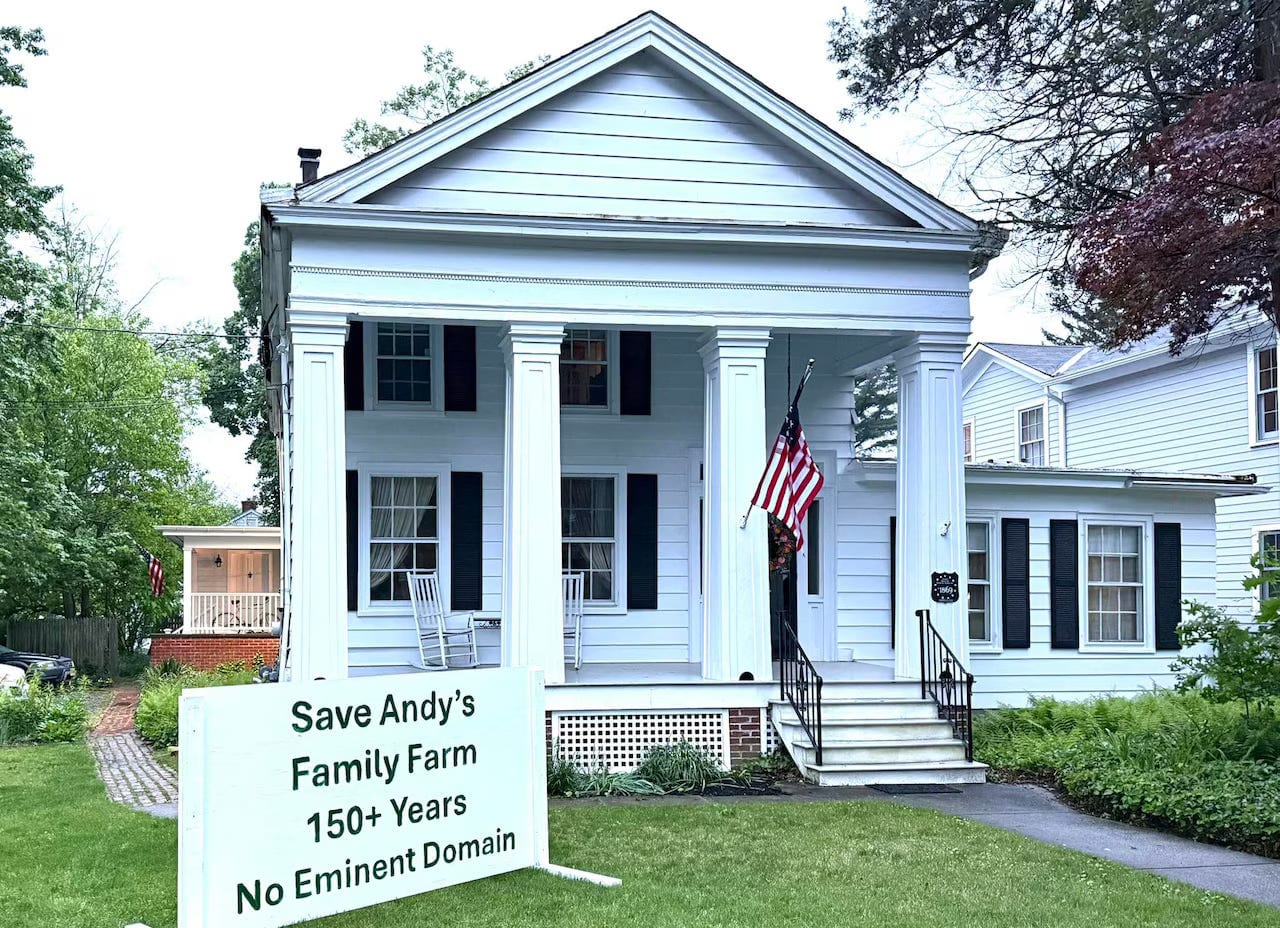This Land Is Not Your Land
Cranbury Defies USDA to Seize Family Farm Despite Federal Warnings
A Legacy Farm in the Crosshairs
Cranbury Township has taken its first formal steps toward seizing the Henry family’s 175-year-old farm, defying federal pressure from the Trump administration and raising alarms about the fate of legacy farmland across the United States. The move marks a significant escalation in a battle that has pitted local housing mandates against agricultural preservation—and now, the authority of a sitting U.S. cabinet secretary against the will of a small New Jersey town.
Despite public warnings from U.S. Secretary of Agriculture Brooke Rollins, Cranbury has retained a real estate appraisal firm to value the 21-acre parcel, a necessary precursor to filing condemnation paperwork under eminent domain. The decision signals the township’s intent to move forward with plans to convert the working farmland into an affordable housing development—one aimed at satisfying obligations under New Jersey’s controversial Mount Laurel Doctrine.
Mount Laurel Doctrine and the Pressure to Build
The Henry farm, first purchased by the family in 1850, is still in agricultural production today. Though the brothers who own it are in their seventies and no longer farm it themselves, they lease the land to a local livestock operator and have refused multimillion-dollar offers from developers in the past, opting instead to preserve the farm as a legacy for future generations.
But Cranbury officials say they have few alternatives. Under the Mount Laurel Doctrine—a legal framework originating from a 1975 state Supreme Court decision—New Jersey municipalities are required to provide for a fair share of low- and moderate-income housing. With few undeveloped parcels remaining, Cranbury voted in May to pursue the Henry farm as its designated site, citing compliance deadlines and the threat of litigation if they failed to act.
A Federal Strategy to Stop the Seizure
In early July, as public backlash mounted, Secretary Rollins entered the fray. Representing the Trump administration’s agriculture policy, Rollins issued a formal letter to township leaders and made public appearances affirming that the Henry farm had been certified by the USDA as “prime farmland”—a designation that typically qualifies land for federal protection under the Farmland Protection Policy Act (FPPA).
The FPPA allows federal agencies to withhold funding from projects that convert high-quality farmland to non-agricultural use if those projects rely on federal dollars. Rollins further suggested that a USDA agricultural conservation easement could be applied to the land, which, if enacted before any legal filings, would effectively restrict the property to agricultural use permanently. Other options floated by Rollins supporters included national historic designation, environmental justice litigation, and grassroots political pressure.
A Race Against Time
Agricultural media outlet Yanasa TV outlined a similar multipronged strategy earlier this month, emphasizing the urgency of securing protective status before the township filed condemnation paperwork. But with Cranbury’s decision to move forward with the appraisal, that window appears to be closing rapidly.
Whether the federal government can still intervene remains unclear. While the USDA can request a review of the project under the FPPA, and could potentially withhold HUD or USDA housing funds if protections are ignored, such moves do not guarantee that the township’s plans will be stopped. Local governments retain broad eminent domain powers, and courts have traditionally upheld those rights unless violations of constitutional or procedural safeguards can be shown.
Testing the Trump Administration’s Farmland Agenda
The episode places Secretary Rollins in a politically precarious position. As a high-profile figure in the Trump administration’s rural agenda, Rollins has framed the defense of farmland as both a cultural imperative and a matter of national security. The administration’s recently announced National Farm Security Action Plan names foreign ownership, urban encroachment, and regulatory overreach as existential threats to the future of American agriculture.
Yet this case, unfolding in the backyard of a blue-state suburb, may test whether the administration’s farmland defense doctrine can actually withstand legal resistance at the municipal level. If Cranbury ultimately succeeds in seizing the farm despite Rollins' warnings, it will not only raise questions about the efficacy of existing federal farmland protection laws—it may also expose structural limits to how far Washington can go to protect agricultural land from local zoning and housing mandates.
The Federal Funding Question
It could also complicate federal funding streams. Should Cranbury proceed without following FPPA compliance, HUD housing grants and USDA funds tied to the development could be jeopardized. That would not only stall the project, but potentially put the state of New Jersey in conflict with federal regulators—creating a precedent that could reverberate through dozens of similar housing-versus-farmland disputes across the country.
A National Flashpoint
Back in Cranbury, the Henry brothers have already filed suit to block the taking. They argue that the land is unsuitable for housing due to its proximity to warehouses and commercial zoning, and that alternative sites were not adequately considered. Community support has surged behind them, with fundraising campaigns generating over $130,000 to support their legal fight. Meanwhile, USDA officials have yet to confirm whether a formal FPPA review has been initiated, or whether the conservation easement process is actively underway.
As the deadline approaches and condemnation filings appear imminent, the case now represents more than just a local land dispute. It has become a symbolic test of the Trump administration’s commitment to rural land protection and of the tools available to defend America’s family farms in the 21st century.
The Road Ahead
If the Henry farm falls, it may not just be a loss for one family—but a signal that even 175 years of heritage, prime soil, and a presidential policy platform can be overridden by a township vote and a looming court deadline.
The furrow has been drawn. What comes next may reshape the future of farmland protection in America.





